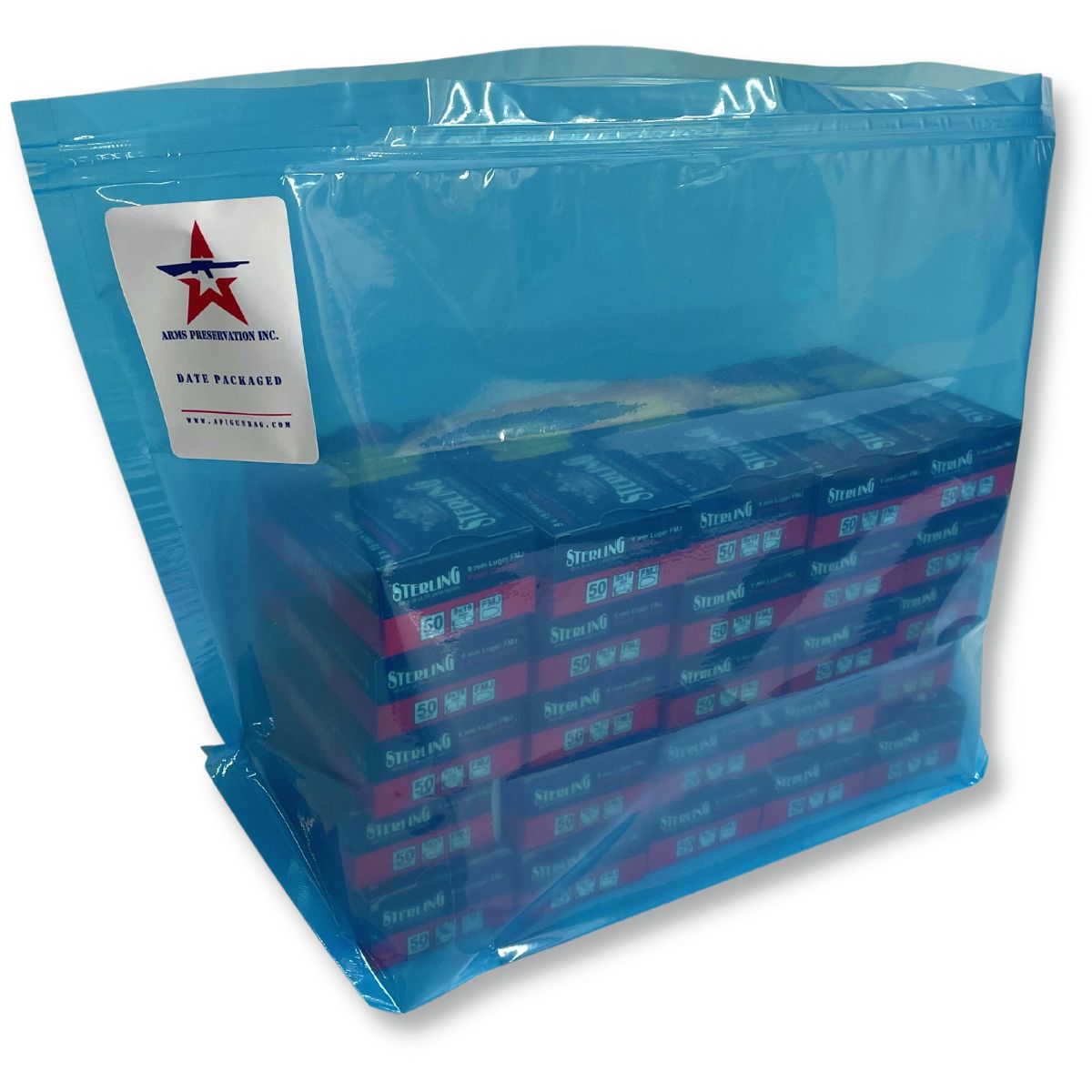How Do VCI Storage Bags Work for Long-Term Gun Rust Prevention?
VCI storage bags create a controlled environment around your firearms. They use vapor corrosion inhibitors to protect exposed metal surfaces inside a sealed bag. This helps reduce rust risk during short-term and long-term storage.
What Is VCI (Vapor Corrosion Inhibitor) Technology?
VCI stands for Vapor Corrosion Inhibitor. It is a specialized corrosion-inhibiting chemistry built into the storage bag material. When the bag is sealed, VCI molecules slowly release into the enclosed air.
The vapor is attracted to exposed metal. It forms a thin, invisible protective layer. This barrier helps block moisture, oxygen, and contaminants that can trigger rust on firearms and critical components.
How VCI Molecules Protect Your Firearm
- VCI chemistry is embedded in the multi-layer film of the storage bag.
- Once sealed, molecules evaporate in controlled amounts into the air space.
- The vapor migrates to all exposed metal surfaces, including internal areas.
- It forms a molecular barrier that helps interrupt the corrosion process.
- When you open the bag, the vapor dissipates, leaving a clean, dry firearm.
Why Choose VCI Gun Storage Bags Over Traditional Methods?
Oil, grease, and gun socks can be messy and inconsistent. They may not reach every small surface or internal cavity. VCI gun storage bags surround the entire firearm with uniform protection inside a sealed micro-climate.
Clean, Dry, Ready-to-Use Protection
VCI storage bags work without thick oils or heavy grease. Your firearm comes out of the bag clean, dry, and ready for use. There is no need for time-consuming wipe downs before shooting.
Protection for Hard-to-Reach Areas
VCI vapor reaches tight spaces like trigger assemblies, pins, springs, chambers, and hidden surfaces. This makes VCI gun storage bags ideal for safes, armories, cases, and long-term storage programs.
Why Arms Preservation Inc. VCI Storage Bags Are Different
Not all VCI bags perform the same. Arms Preservation Inc. VCI firearm storage bags use a rugged multi-layer design with a strong barrier layer and internal VCI layer. This construction helps lock in protection and keep out moisture.
The hook and loop style closure is easy to use and supports repeated openings. Arms Preservation Inc. VCI bags are reusable, made in the USA, and engineered specifically for pistols, rifles, and ammunition storage.
Learn more about the technology on our How It Works page.
See how our bags compare to other options in this VCI bag comparison guide.
Explore pistol, rifle, and ammo options in our VCI gun storage bags collection.
For deeper insight, review VCI storage bags vs. desiccant packs to understand layered protection strategies.
How to Use VCI Storage Bags for Maximum Rust Prevention
1. Start with a Safe, Clean, Dry Firearm
Remove fingerprints, salts, dirt, and old oil buildup. A light quality oil may be used if desired, especially in harsh environments.
2. Place the Firearm Inside the VCI Bag
Position the firearm and accessories so there is no excessive stress on the material. Ensure all items are clean and dry before sealing the bag.
3. Remove Excess Air and Seal Completely
Gently press out excess air without crushing the bag. Close the hook and loop closure fully to create a stable VCI environment. A proper seal is essential for long-term protection.
4. Store in a Stable Environment
Store the sealed bag in a safe, cabinet, armory rack, or case. Avoid direct sunlight or extreme heat where possible. When opened, VCI vapor dissipates quickly, leaving your firearm ready to use.
Best Uses for VCI Firearm Storage Bags
- Seasonal storage for hunting rifles and shotguns.
- Protection for pistols carried or fired less often.
- Long-term storage for collections, safes, and armories.
- High humidity, coastal, or rapidly changing climates.
- Law enforcement, military, and professional weapon programs.
FAQ: VCI Storage Bags and Gun Rust Prevention
How long do Arms Preservation Inc. VCI bags last?
Lifespan depends on handling, environment, and how often the bag is opened. With proper use, multi-layer VCI bags provide 5-10 years of rust protection. Replace bags that are torn, dirty, or no longer seal correctly.
Do I still need oil or grease with a VCI storage bag?
Heavy grease is not required for most conditions. VCI molecules protect clean, dry metal in the sealed bag. A light oil can be added if you want extra security in extreme environments. Firearms can be lubed enough to be functional right out of the bag.
Are VCI bags safe for optics, wood, and modern finishes?
Yes. Arms Preservation Inc. VCI storage bags are designed for modern firearm finishes, optics, and typical stock materials. For specialty coatings, follow the manufacturer’s care guidelines.
Can I reuse a VCI firearm storage bag?
Yes. Arms Preservation Inc. VCI bags are reusable when kept clean and sealed correctly. Do not reuse bags that are punctured, contaminated, or unable to close securely.
Can I use VCI bags with a dehumidifier or desiccant in my safe?
Yes. VCI bags work well with dehumidifiers and desiccants. Combining methods can enhance corrosion protection without adding mess or extra maintenance.



0 comments